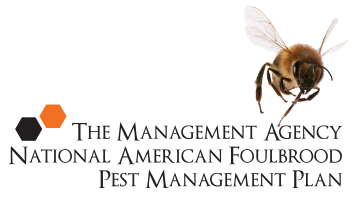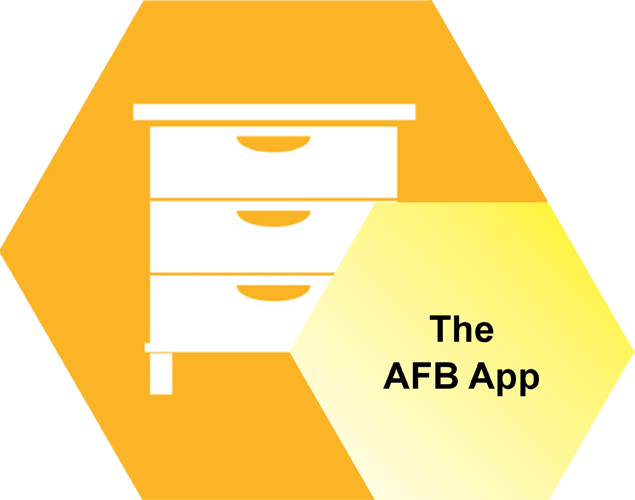Storing dead AFB hives and contaminated equipment
It can be necessary to store equipment
Sometimes AFB hives need to be stored once the beekeeper has killed the bees. For instance fire bans may prevent the immediate destruction of infected materials. In such cases, it is very important that the hives are stored properly so that foraging bees do not have access to the diseased contents.
Best practice for storage
The hives must be stored inside a building. The building should ideally be bee-proof (honey house hot rooms, when not in use, are ideal). However, since sealing of all the gaps in a building is usually not possible (e.g. buildings made of corrugated iron), the hives themselves should be kept under a secure tarpaulin or black plastic sheet, with the sides of the cover secured tightly along the floor.
The entrance of every hive should be blocked with pieces of fibreglass insulation since mice will not readily chew this material out. Gaps between the supers should be sealed with newspaper or tape.
Marking infected equipment
Once the contents of the hives have been destroyed, it is important to keep careful track of empty boxes, lids, floor boards, feeders, etc. from AFB infected hives destined for sterilisation. It is a common practice to keep these materials stored until there is time in the beekeeping management schedule to carry out wax dipping.
The best way to identify these materials is to mark them with “AFB”, using a felt-tip marker or black crayon. This may seem like an extreme suggestion. However, unless the supers are properly marked, there is a chance that they will be incorporated into stacks of clean supers, especially when staff are unaware of the history of supers kept in a shed.
Pitfalls to not marking equipment properly
One beekeeper very carefully placed all his unmarked empty supers that had come off AFB hives, complete with their frames in a room in his honey house. When he had accumulated enough, he was going to burn the frames and sterilise the boxes. He had about 60 boxes in the stack when a new employee tidying up the shed added this stack to the stack of stored honey supers. Because there was no way to tell which boxes they were, it cost the beekeeper about 40 more AFB hives the next spring when he put the boxes onto clean hives.
Take the AFB 5 minute quiz
How well do you know what you need to know about AFB and beekeeping? Take our short quiz and find out.
Videos
Our videos cover everything from your legal obligations to how to recognise AFB, collecting cell and bee samples and more.
Symptoms
There’s a lot of good information here, telling you everything you need to know about recognising AFB: the visual symptoms, smell of AFB and more.
Inspection and Diagnosis
Successfully eliminate AFB by telling the difference between symptoms of AFB and other brood diseases in the hive. We tell you the best methods for inspecting your hives.
The Law
New Zealand beekeepers have a number of legal obligations that must be met regarding AFB disease. Read the shortened list in summary, here.
Elimination
Most hives become infected because bees, honey or equipment have been put into a hive from another hive that is infected with AFB. Lower your chances of an AFB infection by reading this section.
AFB Recognition Course Info
Find out when the next AFB Recognition and Competency Courses, or Refresher Courses are available. These are held throughout the year in various New Zealand locations across the South Island and North Island.
The AFB App
Follow the link below to open the App. Once open to save to your device you need to bookmark the URL on your phone so you can find it easily again. Please click here to open.









